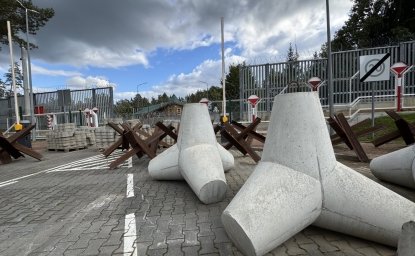Colonel Bill Eldridge, a former U.S. Air Force squadron commander, is the first active-duty officer to come to the Wilson Center as a scholar in residence. He has flown in combat over Afghanistan and is one of a select group of pilots ever to have flown the B-2 bomber, and now he is spending nine months as a Wilson Center public policy scholar assessing the future of U.S. nuclear policy.
In recent years, serious errors made by the Air Force led to a major shakeup in the Air Force's leadership, resulting in the firing of more than a dozen officers, including several colonels and generals. In one such error two years ago, a shipment to Taiwan, which should have contained helicopter batteries, accidentally contained four nuclear warhead fuses. Then, last year, a B-52 bomber flew from North Dakota to Louisiana with six nuclear missiles strapped to it. The flight's crew believed they were carrying disarmed weapons but discovered that live warheads mistakenly were still attached hours after the plane landed.
The gravity of these errors prompted Eldridge's thinking about the Air Force's nuclear mission. He came to the Center to write a series of articles for military journals, examining deterrents to such dangerous errors and the role the Air Force can play in improving nuclear safety. His first article deals with how to build a safer, long-term nuclear culture. Recommendations included better identification on weapons shipments, such as color coding and more prominent markings, and better command and control procedures.
The thrust though of that article, he said, was "rebuilding a professional, responsible corps who take pride in the nuclear mission." One way to do this, he suggested, is improving the simulated exercises used in training such as having a "Nuclear Flag" exercise in addition to the Air Force's traditional Red Flag missions that simulate air battles. He also suggested competitions which not only are good for training but also promote teamwork.
Inspired by his father, an Air Force aircraft mechanic, Eldridge graduated from the Air Force Academy nearly 20 years ago. He spent much of his duty time in the Midwest flying the B-1 and the coveted B-2 stealth bomber. After 9/11, he flew a B-2 from Missouri to Afghanistan. "We flew for 40 hours, one of the longest combat sorties ever flown," he said. That was during Operation Enduring Freedom, a post-9/11 mission aimed at striking terrorist camps and helping ground troops move in to push out the Taliban.
As the government deliberates on funding for troop operations, Eldridge said the most important resource the Air Force needs is new tanker aircraft, which enables the Army and Marine Corps to access remote places and also provides fuel for Navy aircraft.
"The Air Force's top priority is to reinvigorate its nuclear enterprise, then contribute all we can toward current conflicts, take care of our Airmen, and modernize our aging air and space inventories," said Eldridge. "By researching and writing on our top priority, when I return to the Air Force, I can be a better advocate for the nuclear mission."
Related Links



